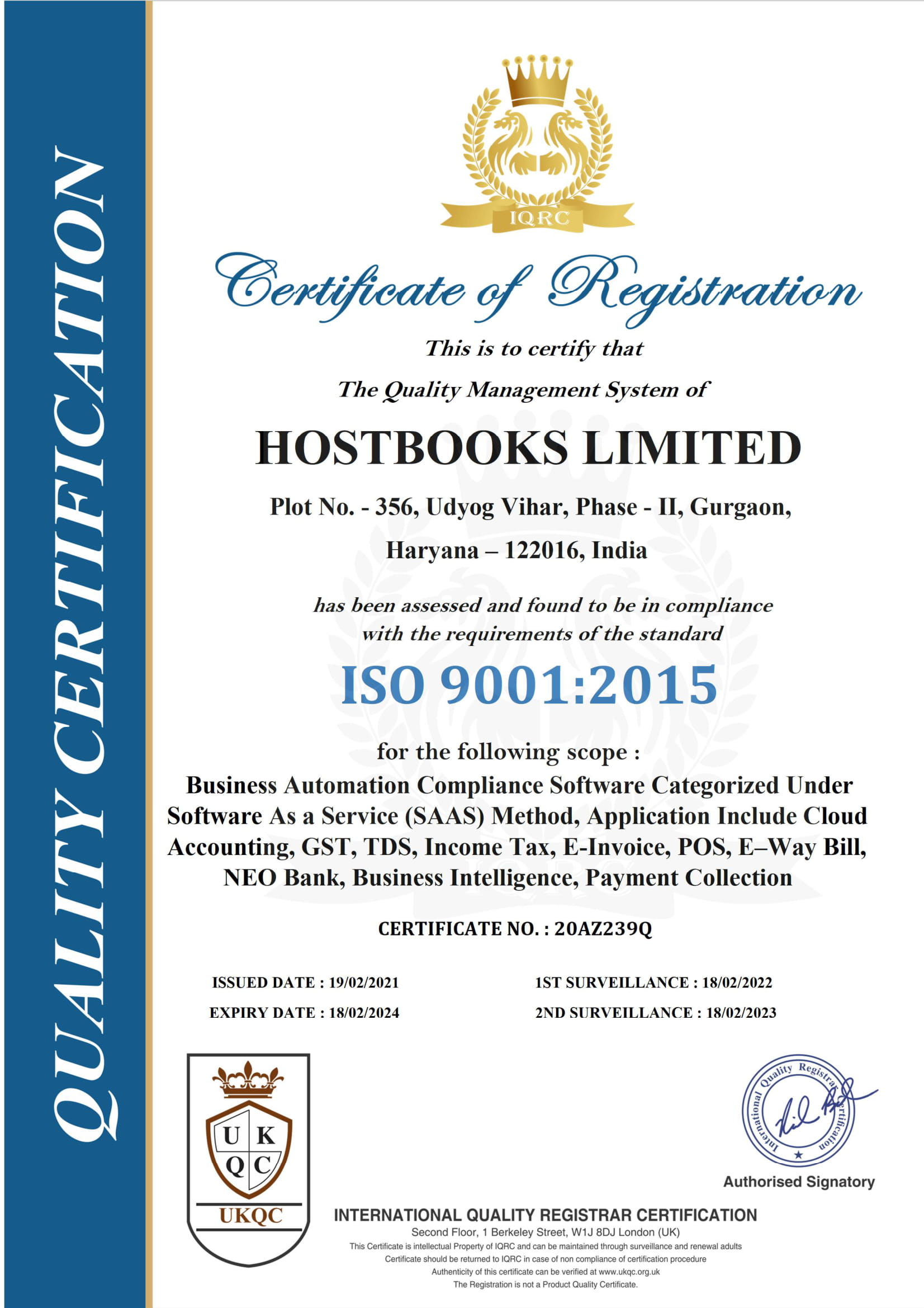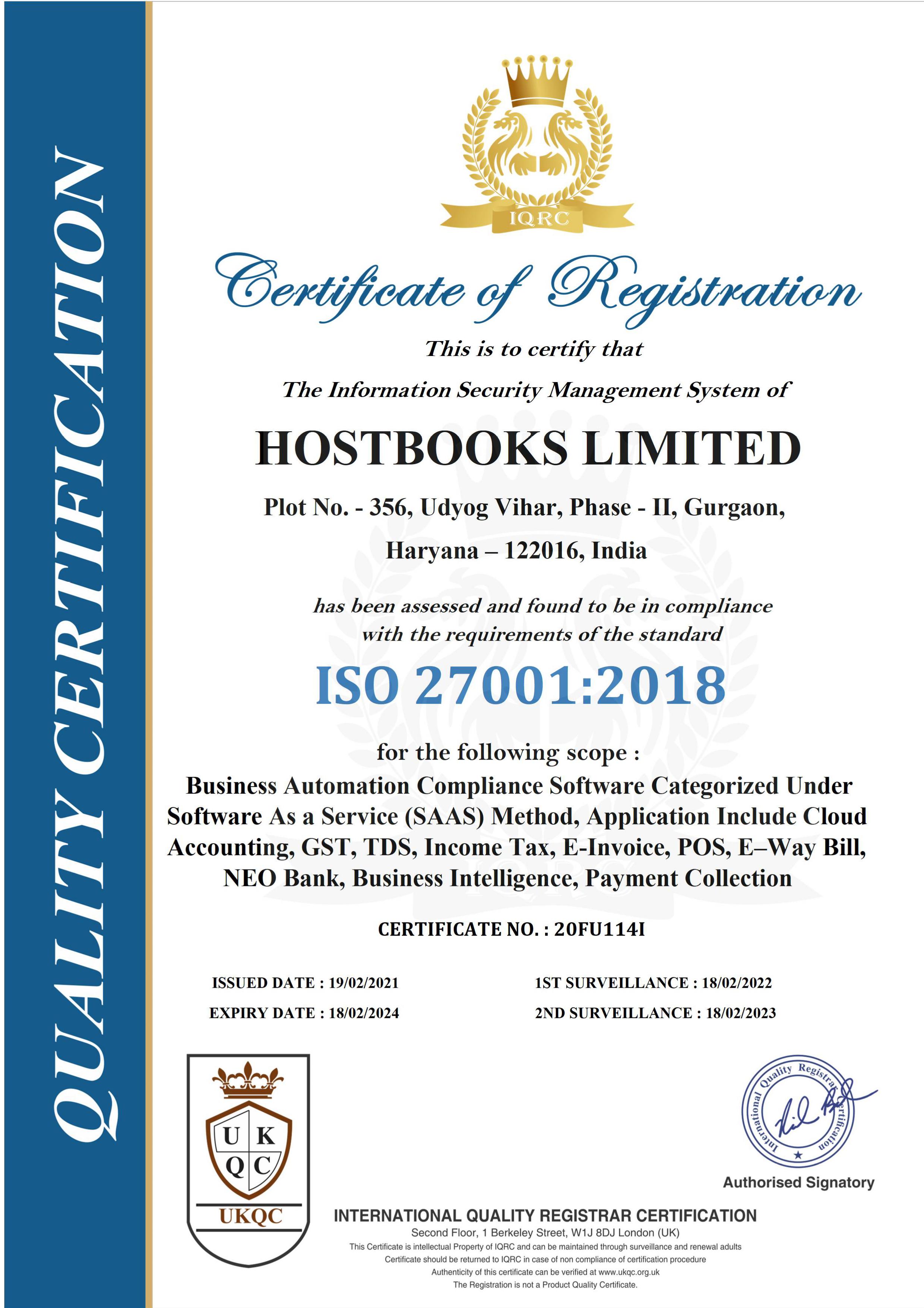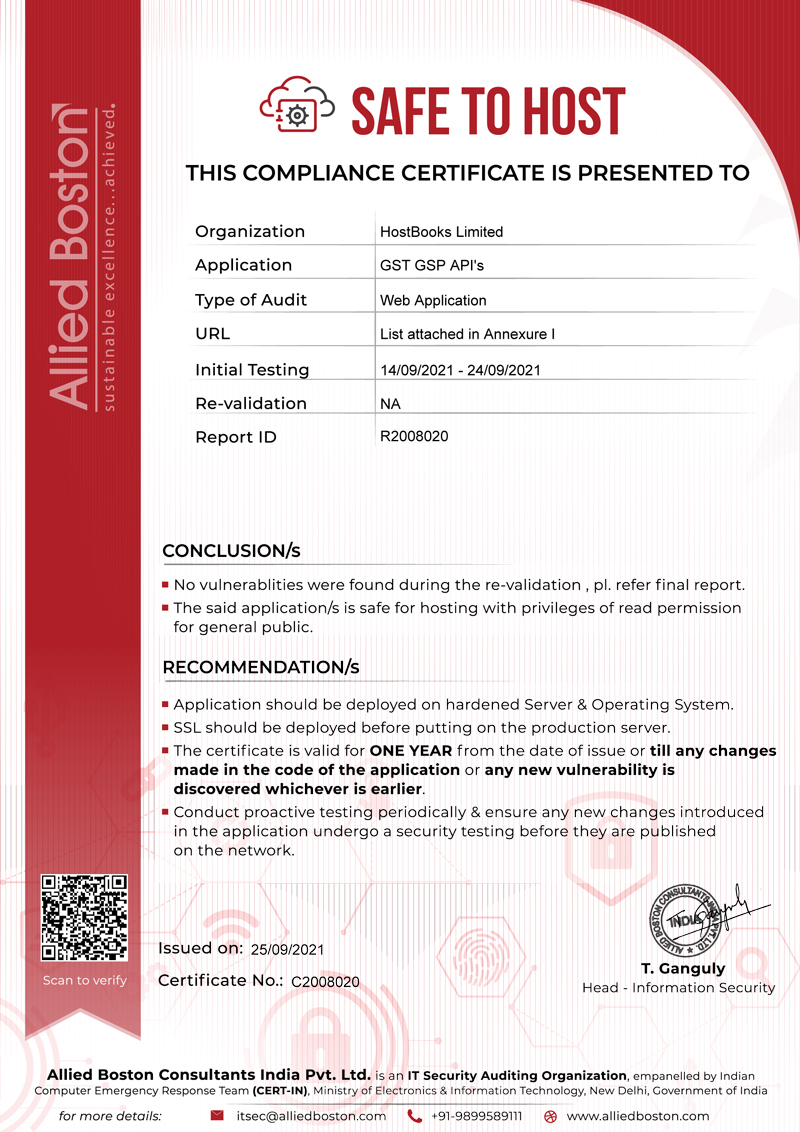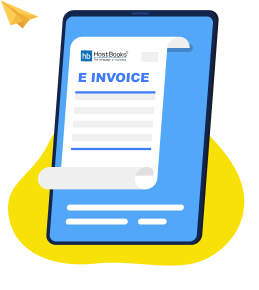Purchase Entry in Tally Prime 2024: Voucher, Accounting, Item Invoice Method
October 4, 2023What is Proforma Invoice? Meaning, Format, Template 2024
December 5, 2023
Sales is one of the most common entries handled by accountants. Here are the steps to create a Sales entry in Tally Prime in Voucher Mode.
- 1. Navigate to the “Gateway of Tally.”
- 2. Click on the “Accounting Vouchers” section. Or use the keyboard shortcut “Alt+V.”
- 3. Select “F8: Sales” on the Button Bar. Or simply press the F8 key.
- 4. Press Ctrl+H to choose the voucher mode as “As Voucher.”
- 5. Credit the Sales Account.
- 6. Credit the GST Output Tax accounts.
- 7. Debit the Party Account or Bank Account.
- 8. Press “CTRL +A” to save the entry.
This is creating a Sales entry in Voucher Mode. Keep in mind that, by default, you can’t maintain item-wise stock and auto credit GST in this mode of sales entry.
Just as with purchase entries, there are three different methods for recording sales entries in Tally:

- 1. Item Invoice Mode (most common): Ideal for recording item-wise sales entries with detailed inventory information.
- 2. Voucher Mode: Suitable for general sales, non-inventory transactions, bulk entries, consumables, and sales of items not intended for trading.
- 3. Accounting Invoice Method: Used for entries without maintaining stock items or inventory, including GST details.
This blog with provide detailed tutorial for passing sales entries in Tally Prime for each of these modes with necessary ledgers, prerequisites, and screenshots.
Before getting into the steps, we will discuss sales journal entry to have clear concept. If you already know how a Sales entry with GST is passed, skip to the main part. Here is a table that gives a detailed breakdown of the sections.
| Section | Details |
|---|---|
| Intro |
What is Sales Entry? Basic Steps to pass Sales Entry in Tally Prime using Voucher Mode. Introduction to different methods of sales entry in Tally. Flow of Article for Better Read |
| Sales Entry – Importance, Types, and Journal Entry |
What is sales entry and why it’s recorded? Types of Sales Details of Sales Entry Journal entry for sales |
| Sales Entry with GST |
Introduction to GST (Goods and Services Tax) in India. Components of GST Output Tax and its significance. Journal entry for sales with GST, including an example. |
| Voucher Method |
When to use Voucher Mode and its prerequisites. Step-by-Step Guide |
| Accounting Invoice Method |
When to use Accounting Invoice Voucher Mode. Prerequisites – required ledgers Step-by-Step Guide |
| Item Invoice Method |
Overview When to use Accounting Invoice Voucher Mode and its prerequisites. Enabling inventory features and prerequisites. Steps to pass item-wise sales entry in Tally Prime. |
| Creating Stock Items |
Importance of stock groups, units of measurement, and GST details. Steps for creating stock items in Tally Prime. |
| Conclusion |
Summary of the Entire Article |
| FAQ Section | All Important queries related to passing Sales Entry in Tally |
Sales Entry: Importance, Types, and Journal Entry
Skip this section if you already know about Sales and its journal entry.
A Sales Entry, in accounting, is a transaction recording the transfer of goods or services from a business to an external entity in exchange for payment.
Sales vs Income/Revenue
People often mix up income with sales, which can lead to confusion. Although these may share similar journal entries, they impact your balance sheet differently.
- “Sales” signify the exchange of goods or services, recorded as income or revenue when they are sold or provided as part of the regular course of business.
- “Income/Revenue” encompasses all earnings generated by a business, including sales revenue and other sources such as interest, royalties, rent and fees.
For example, if you run a retail clothing store and sell merchandise to customers, it’s considered a sale. However, if you allow a apparel company to advertise in your shop in exchange of money- this isn’t sale but income from ads or income from other sources.
The given entries are passed to sell an item only, not for booking other revenue.
Why is a Sales Entry Passed?
Sales entries are made for several key reasons:
- 1. Recording Revenue
- 2. GST Compliance and Output Tax
- 3. Inventory Management
Journal Entry for Sales
Typically, a sales journal entry involves two accounts: Sales Account and Party Account (often a customer).
- Debit the Sales Account: Represents the revenue generated from selling goods or services.
- Credit the Party Account: Records the obligation to deliver the goods or services, indicating that the customer owes you payment.
-
Party / Cash/ Bank A/c Dr. ______________
-
To Sales A/c Cr _________
Details in a Sales Entry
A comprehensive sales entry should include the following details:
- 1. Date
- 2. Invoice Number
- 3. Customer Details
- 4. Description of the items sold.
- 5. Quantity
- 6. Rate
- 7. Total Amount
Service and Goods Sales Entry:
- Goods Sales Entry: Records the sale of physical items or inventory for use or resale. It includes details like quantity and unit price.
- Service Sales Entry: Records the provision of services, including consumables, replacements, etc.
Sales Entry with GST
Recording a sales entry with GST follows a similar process to a regular sales entry, with some additional considerations:
- 1. Debit the Customer/ Bank or Cash A/c
- 2. Credit GST Collected: The GST collected on sales must be debited as Output Tax.
- 3. Separate Ledgers for GST: Depending on the location of the buyer, you need to record CGST, SGST, or IGST in separate ledgers to comply with Input Tax Credit rules.
- CGST Output Tax A/c: For intrastate sales within the same state.
- SGST Output Tax A/c: For intrastate sales within the same state.
- IGST Output Tax A/c: For interstate sales between different states.
- 4. Credit Sales A/c
Sales GST Entry for Intrastate Sale
-
Custommer A/c Dr ___________
-
To Sales A/c Cr ___________
-
To CGST Output Tax A/c Cr ___________
-
To SGST Output Tax A/c Cr ___________
Note: For interstate sales, use IGST Output Tax A/c.
Example of Sales Entry with GST (Interstate)
Suppose your company, located in Maharashtra, sells goods worth Rs. 15,000 with a GST rate of 18% to Business B, in Delhi.
Party A/c Dr 15,000
To Sales A/c 17,700
CGST Output Tax A/c Dr 1,350
SGST Output Tax A/c Dr 1,350
Sales Entry in Tally Prime – Voucher Method
Voucher mode offers a straightforward way to record sales transactions in Tally. It allows for both debit and credit entries, offering flexibility for consolidated and adjustment entries.
When to use Voucher Mode:
- When detailed item-wise records are not required.
- When inventory management is not needed.
- Service sales
- For bulk sales entries, scrap sales, by product sales, and fixed asset sales.
Before entering a sales journal entry in Tally Prime using Voucher Mode, ensure you have the following ledgers:
- 1. Customer A/c: Represents the buyer or recipient of your products or services. If sales involve cash or bank transactions, use existing cash or bank ledgers.
- 2. Sales Account Ledger: To record sales revenue, create sub-ledgers for different types of sales.
- 3. GST Output Tax Ledgers: Necessary for tracking GST components.
- CGST Output Tax A/c
- SGST Output Tax A/c
- IGST Output Tax A/c
Optional:
Create rate-wise GST accounts for organized tracking if required (e.g., CGST Output @ 9%, IGST @ 18%).
Steps to Pass Sales Entry in Voucher Mode in Tally Prime

- 1. Access Sales Voucher:
- Go to “Gateway of Tally”
- Select to “Create Vouchers” or Press “v”
- Press F8 (Sales) for Sales Voucher
- 2. Press Ctrl+H (Change Mode) to choose the appropriate mode, in this case, “As Voucher.”
- Input the invoice number and date
- 3. Choose the Customer A/C to be debited and provide accurate account details.
- For cash sales, select “Cash” or “Bank.” For credit sales, pick the relevant customer ledger.
- If necessary, create a new ledger by pressing Altice.
- Enter the total Amount to be received.
- 4. Press Enter and select the Sales A/c while entering the Net Sales Amount.
- 5. Press Enter again and choose the required Output Tax Account (CGST Output Tax, SGST Output Tax, etc).
- 6. Finally, press Ctrl+A to save your sales voucher entry.
Please note that additional details may be requested, such as delivery information, reference bill numbers, narration, etc. However, these fields are optional, so only fill them in if necessary.
Sales Entry in Tally Prime – Accounting Invoice Method
The accounting invoice method in Tally Prime is quite like the Voucher Entry method. The key difference is “Accounting Invoice Method” does not allow you to input both credit and debit entries simultaneously. This method is ideal for recording a single invoice without the need to maintain stock or inventory details.
When to use Accounting Invoice Mode:
- When there’s no requirement to maintain stock or inventory.
- For recording service provided entries.
Before you begin passing a sales journal entry in Accounting Invoice Mode, you will need the following ledgers:
- Customer Account / Bank Account / Cash Account
- Sales Account Ledger
- GST Output Tax Ledgers
Step to Pass Sales Entry in Tally Prime in Accounting Invoice Mode

- 1. Enter Sales Voucher:
- Go to Gateway of Tally
- Select Vouchers or Press V
- Press F8 (Sales).
- 2. Press Ctrl+H (Change Mode) to select the desired mode, which, in this case, is “As Accounting Invoice.”
- 3. Enter the invoice number and date.
- 4. Select the Customer A/C to be Debited and input the total receivable amount.
- For cash purchases, select “Cash” or “Bank.” For credit purchases, choose the appropriate supplier ledger.
- You can create a new ledger by pressing Alt+C if needed.
- 5. Press Enter and choose the Sales A/c and enter the Net Sales Amount
- 6. Press Enter and Select the required Output Tax Account (CGST Input Tax, SGST Input Tax, etc)
- 7. Press Ctrl+A to save your Sales entry.
Sales Entry in Tally Prime – Item Invoice Method
The item invoice method in Tally Prime is the most important and widely used method for recording sales entries as it allows for the detailed recording of inventory and stock information for each item.
However, it’s important to note that this method can be somewhat complex due to the requirement for specific details before initiating the sales entry process. Moreover, the item invoice mode is not activated by default, and users must enable the inventory option in Tally Prime to utilize this feature.
Enabling Inventory Features in Your Business
Please follow these steps to enable inventory features in your business if they aren’t already activated in Tally Prime:
- 1. Go to the “Gateway of Tally.”
- 2. Navigate to “F11: Features” and select “F1: Inventory.”
- 3. On the “Company Operations Alteration” screen, provide the necessary details.
- 4. Enable the options you require, such as stock management, classification, and order processing.
- 5. Press “Ctrl+A” to save your changes.
Prerequisites: Before you proceed with item-wise sales entry in Tally Prime, you’ll need to create the following:
- 1. Customer Account: Set up ledger accounts for your customers, including their GST details and business locations.
- 2. Sales Account: This ledger represents where you’ll record the revenue from your sales. You can create sub-ledgers for different types of sales, such as local sales, interstate sales, or service sales, as needed.
- 3. Items: Define the items your business trades, specifying the HSN code, GST rate, and unit of measurement (UoM) for each item. (Detailed instructions for creating new items are provided later in this section.)
- Unit of Measurement (UoM): Establish the units of measurement for your items, such as pieces (pcs), kilograms (kg), liters (litre), etc. You should set this up before creating stock items.
- Stock Group: Consider creating groups for your stock items, like consumables or items with an 18% GST rate, to facilitate inventory categorization.
- 4. GST Output Tax Ledgers: These ledgers are essential for recording the GST output tax component of your sales transactions. Ensure you have the following ledgers:
-
- CGST Output Tax A/c
- SGST Output Tax A/c
- IGST Output Tax A/c
Steps to Enter Item-Wise Sales Entry in Tally Prime

- 1. Access the Sales Voucher in Tally Prime:
- Go to Gateway of Tally
- Select Vouchers or Press V
- Press F8 (Sales).
- 2. Press Ctrl+H (Change Mode) to choose the appropriate voucher mode, which, in this case, is “Item Invoice.”
- 3. Input Invoice Number and Date
- 4. Provide the supplier’s details, including their name, address, and contact information.
- 5. For cash sales, select “Cash” or “Bank.” For credit sales, choose the relevant customer ledger.
- If needed, enter receipt details such as the receipt document number, bill of lading, destination, and more.
- 6. Select the sales ledger you’ve set up under Sales Accounts and Enter Net sales amount
- 7. Input the details of the stock items or services you’re selling.
- You can create new items or ledgers on the spot by pressing Alt+C.
- 8. Choose the stock item and specify the quantity.
- The rate will automatically populate if available, but you can manually enter the rate or amount if necessary.
- 9. Select any additional ledgers, such as transportation charges, insurance, or discounts, if applicable.
- 10. Add any required remarks or narration.
- 11. Press Ctrl+A to save the sales voucher.
Printing the Invoice
- 1. Press Alt+P (Print) and then press Enter on “Current.”
- 2. If needed, preview the invoice by pressing I (Preview) before printing.
- 3. To further customize the invoice layout, press F12 (Configure).
- 4. Finally, press P (Print) to generate the sales invoice.
Creating Stock Items in Tally Prime – Step by Step
Stock items in Tally Prime are the products your business deals with, whether you manufacture them or trade them.

- 1. Access Stock Item Creation:
-
- Go to Gateway of Tally.
- Navigate to Inventory Info. > Stock Item > Create (under Single Stock Item).
- 2. Enter Stock Item Details:
- Provide the name of the stock item.
- Optionally, add an alias name for reference.
- 3. Categorize in Stock Group:
- Select the relevant stock group to classify the item.
- You can create a new group by pressing Alt+C if needed.
- 4. Choose Unit of Measure (UoM):
- Pick the unit of measure (UoM) applicable to the stock item.
- Create a new UoM with Alt+C if necessary.
- 5. GST and Duty (If Applicable):
- Set GST to “Applicable” if needed and enter GST details.
- Specify the rate of duty if applicable for excise calculations.
- 6. Opening Balance (If Any):
- If you have an opening balance for the stock item, provide quantity and rate details.
FAQs about Sales Entry
What is the entry for sales in Tally?
In Tally, the entry for sales involves two accounts: Sales Account and Party Account (usually a customer or client). The specific journal entry for sales can vary depending on the nature of the sale and whether it is a credit or cash sale.
1. Entry for Sales in Tally:
- For Cash Sales:
- Debit: Cash/Bank Account
- Credit: Sales Account
- For Credit Sales (Sales on Account):
- Debit: Accounts Receivable/Customer Account
- Credit: Sales Account
What is a sales voucher entry?
A sales voucher entry in Tally is a transaction recording the sale of goods or services. It includes details such as the invoice number, date, customer information, item details, quantities, rates, and any applicable taxes or discounts.
What is the journal for sales?
The journal entry for sales is
Customer/Cash/ bank A/c Dr ___________
To Sales A/c __________
Is sales a credit entry?
Yes, sales is a credit entry when goods or services are sold on credit to customers, resulting in an account receivable as asset or increase in Bank/cash balance.
What are sales on account?
Sales on account refers to transactions where goods or services are sold to customers with an agreement to make payment later. It creates an account receivable for the business.
What is sales return?
Sales return, also known as returns outward, occurs when customers return or reject goods or services previously sold. The journal entry for sales return involves debiting the Sales Return Account and crediting the Accounts Receivable or Cash Account, depending on whether it’s a credit or cash refund.
What is the sales expenses?
Sales expense typically refers to the costs incurred directly related to the sales process. It includes expenses like sales commissions, advertising costs, marketing expenses, and other costs associated with promoting and facilitating sales. These expenses are recorded separately from the sales revenue and are part of the overall cost of selling goods or services.
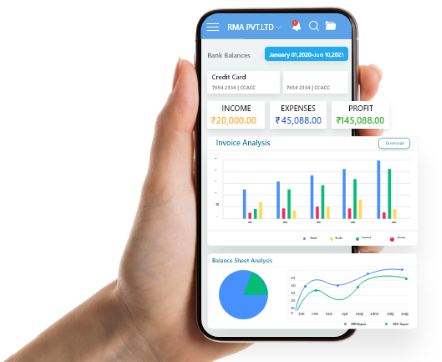
Try HostBooks
SuperApp Today
Create a free account to get access and start
creating something amazing right now!










